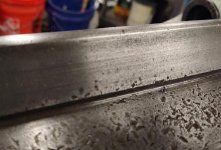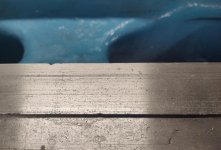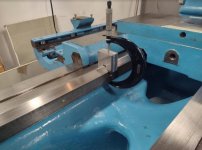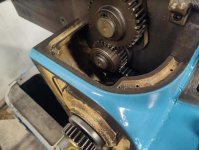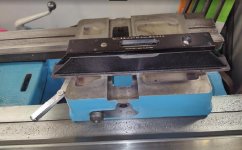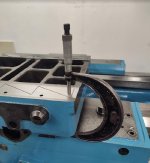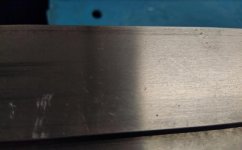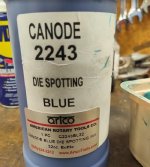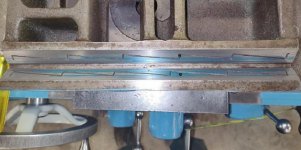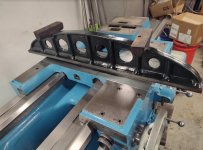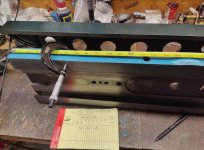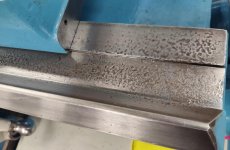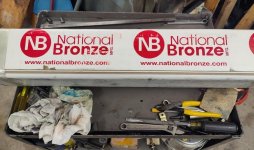dcsipo
Diamond
- Joined
- Oct 13, 2014
- Location
- Baldwin, MD/USA
Getting on to measuring the inside of vee way on bed, for the carriage.
Got the lead screw reverse rod pulled off machine to make room for a mic. Don't judge my mic, it looks heinous from a PO, but it measures fine. With the thickness of my new tool included, I measured 2.7565" on HS side, and 2.7585" on TS side. So a .002" variance over the 88" of length of vee ways, on un-wore portions of bed.
View attachment 340439
Because of the .002" variation over the length of bed, I just wanted to check the front bed rail thickness. I got about a +/- of .001" the entire length, with thickness measured at 5.238":
View attachment 340440
Feeling my numbers were good and consistent I mic-d the inner surface of vee way. As before, I marked out 15 spots, 6" apart over the 88" of vee way length. Head stock side starting at #1, this is my readings:
View attachment 340441
So the depth of worst wear area is .0105".
I was reading through your latest posts, and I have one question. Are you sure? Because I am not. Since you are using the bottom of the rails as a reference you have no real way to decide if all the wear is on the top or a combination of both. I still contend you need to buy, beg, steal borrow a Kingsway. That allows you to use gravity as the reference and it is pretty constant over 88" of horizontal travel
 But even with that, I would say your ways are fine for that lathe. The saddle is close to 24" long which makes your measured "error" less than 7 tenths per foot. I would not worry about it, it will not affect your ability to make parts with tight tolerances.
But even with that, I would say your ways are fine for that lathe. The saddle is close to 24" long which makes your measured "error" less than 7 tenths per foot. I would not worry about it, it will not affect your ability to make parts with tight tolerances.



